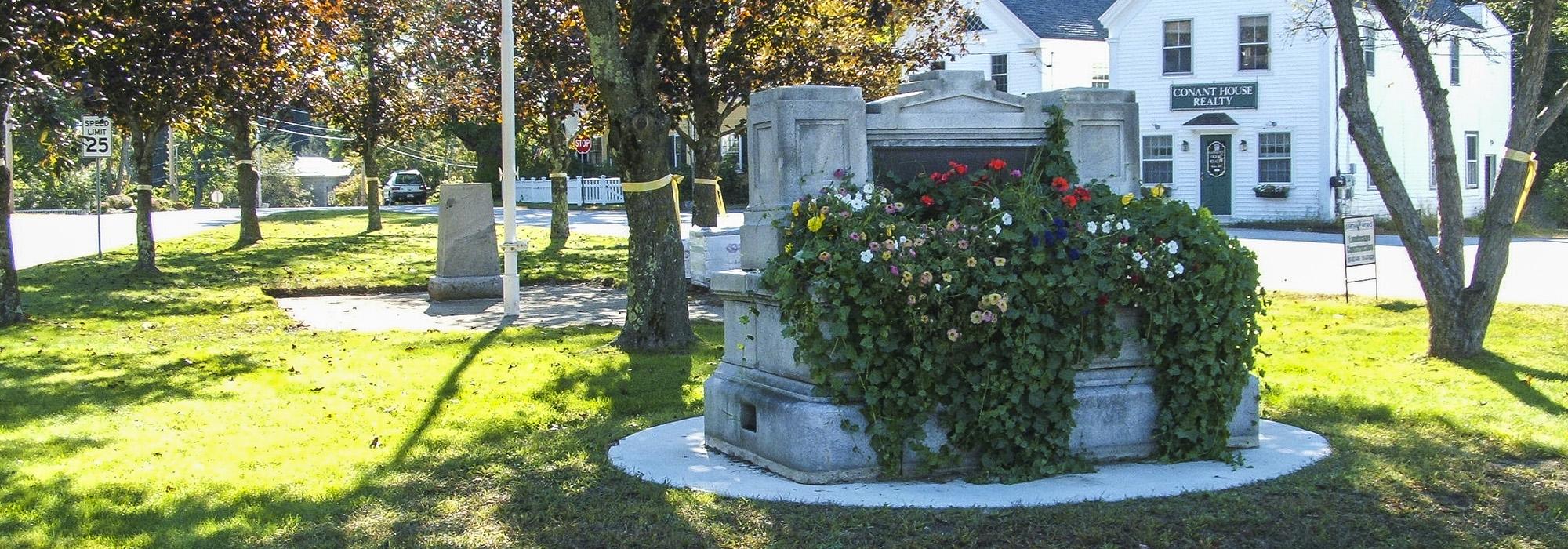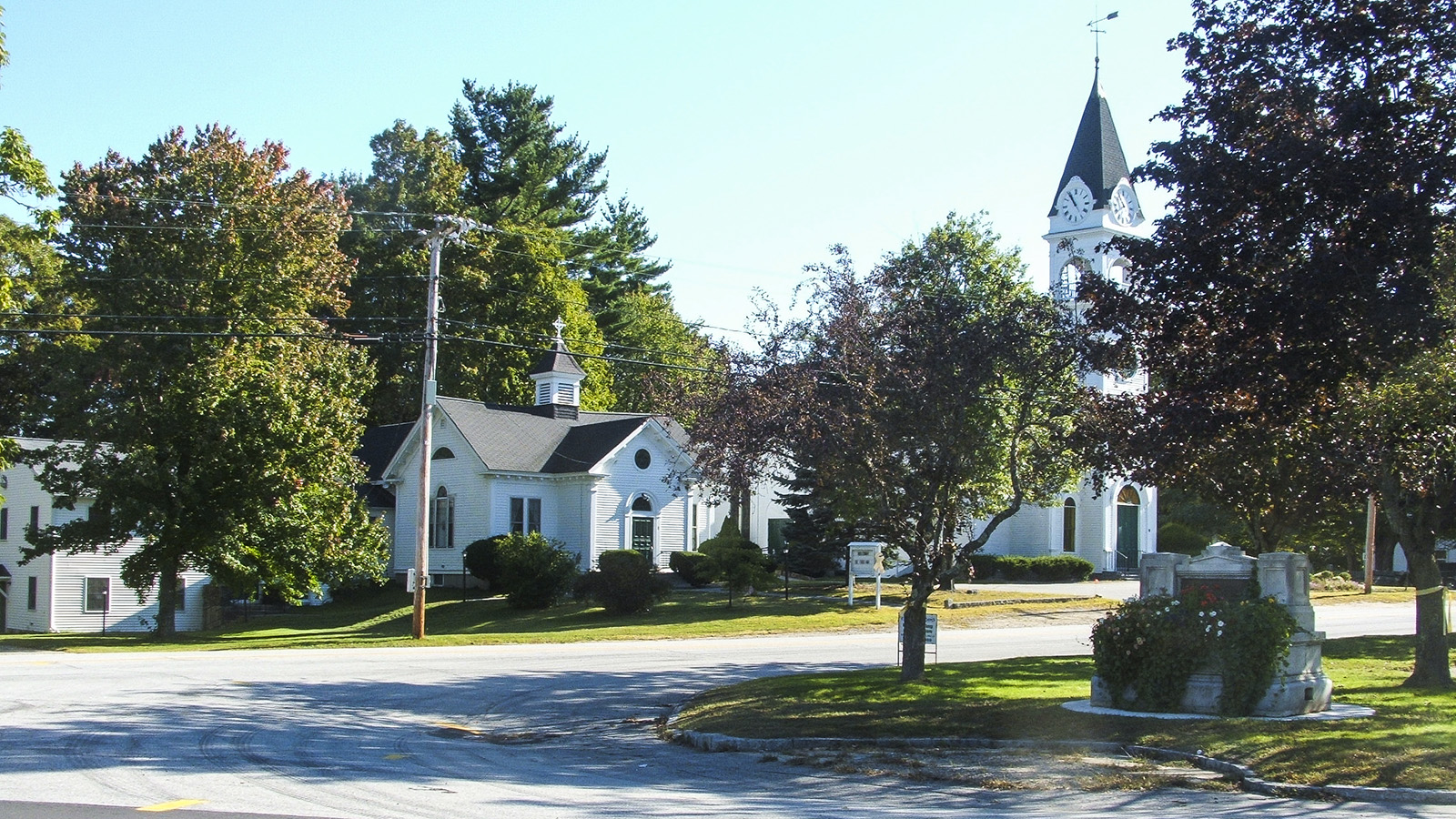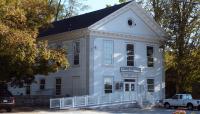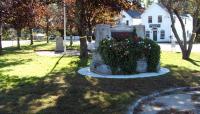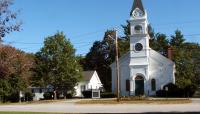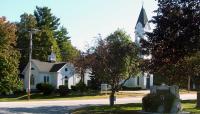Landscape Information
Settled in 1764, Alfred became the county seat in 1806 which generated a need for permanent housing for lawyers, temporary lodging for courthouse visitors, and other civic buildings to support the growing community. The village developed where two well-traveled roads intersected at acute (rather than right) angles; the resulting triangle, known in New England as a “heater piece” for resembling a flat iron, eventually became the village green. Several taverns, a hotel, doctor’s office, Congregational Church, town hall, country store, and lawyers’ homes were built near the green, with the courthouse a short distance away.
The green itself was improved in the 1870s, planted with elm trees and lawn. Resident William Conant also donated a marble fountain and watering trough set on a granite base, installed around 1900 and still in place today. Over time, maples and flowering fruit trees have replaced the original elms lost to Dutch elm disease while the perimeter of the green has been delineated with granite curbing. In 1986, a monument made of local granite was dedicated to Alfred’s armed forces’ members. Few changes have occurred in the village surrounding the green; the Alfred Historic District, including 48 buildings, was listed in the National Register of Historic Places in 1983.



